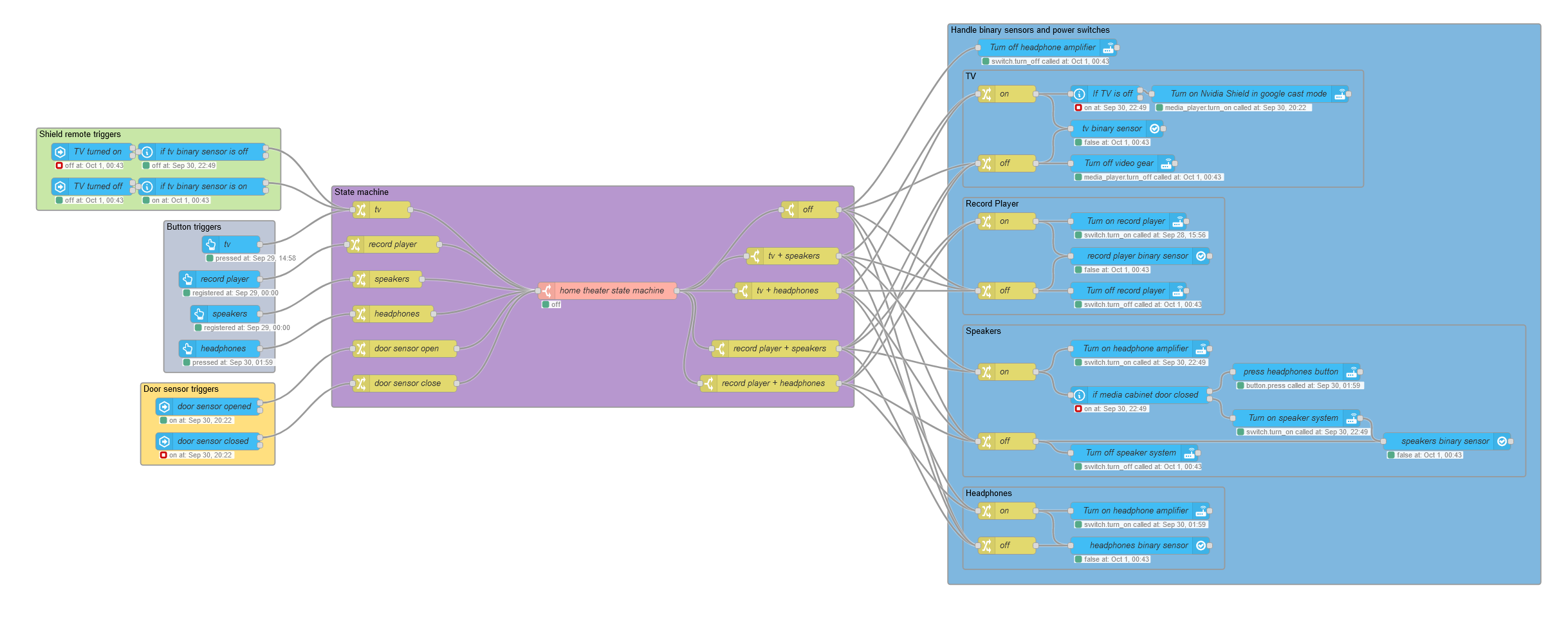

thejevans
- 1 Post
- 29 Comments
Do you just use podcasts on your phone? If you have an Android phone, AntennaPod, while not self-hosted, works very well and is FOSS. There are other options to “self-host podcasts” to varying degrees:
-
PodHoarder: mentioned in another comment, which could be piped into AntennaPod, but I find that a bit redundant for me
-
AudioBookshelf: a fantastic self-hosted audiobook server, and an okay podcast server, but is focused around streaming from your server to your listening device, and I prefer to download on wifi to listen later (it was pretty clunky for that workflow).
-
GPodderSync: barely supported at this point and missing too many features to be useful in my opinion, but a neat backend for AntennaPod and other players to sync to some degree.
Bonus: the creators of AntennaPod and other FOSS podcasting software are working on a replacement for GPodderSync here: https://github.com/OpenPodcastAPI
EDIT: for RSS in general, I use FreshRSS, which uses the g-reader API to sync across multiple apps. It’s awesome.
This is the way. ddclient can work with lots of DNS providers that have APIs https://ddclient.net/protocols.html, but Cloudflare has a lot of advantages.
If you want to test what your equipment is doing to your latency, connect your pc directly to your landlord’s router, run latency tests multiple times, then set everything up as you normally would and run the same tests again. Some recommended tests for different situations would be fast.com for netflix/video streaming performance, and https://www.waveform.com/tools/bufferbloat for bufferbloat. Other things you’ll want to check for gaming performance are double-NAT and ping tests for the online games you tend to play.
My first homelab was a synology NAS, and my gaming PC with a DIY linux hypervisor as the main OS, a linux VM for hosting servers, and a Windows/Mac/Linux VM trio (each with GPU passthrough) that I would switch between for my workstation. I lost performance for sure, but it taught me a lot without the need to purchase more hardware.
If you consider it temporary, it’s not a bad way to learn.
I understand both frustrations. I still run HA, and with a few addons, namely VSCode, ESPHome, and Node Red, it’s a very serviceable solution, and I don’t think anything else comes close. The config is still YAML for the most part, but you do have to go through a lot of GUI to get to edit the individual elements. That’s for sure not as nice, but I wouldn’t want to set up my complicated home theater automation on any other system.

The M600 uses soldered-on mobile CPUs and SODIMMs for RAM. You won’t be able to remove the CPU and the RAM is the wrong form factor for 99+% of desktop motherboards. You’re right that you can use the SSD, but I wouldn’t, given how cheap NVMe drives have gotten these days. You can get really great 2TB drives for under 100€.
You’d be surprised by how much PC you can get for way less than the 1200€ that you said the Synology box would cost. This person was able to snag a very competent base system for a NAS for under 300€, and in another video they walk through how to build one from scratch using mostly standard parts
I would avoid USB hard drive enclosures. Did you already buy the Lenovo system? If not, you’d be much better off building a pc in a simple tower case and having your drives mounted inside and connected directly via SATA or through an HBA.
EDIT: Additionally, for your OS, I would look into TrueNAS Scale instead of Linux Mint.


No clue. Could be just someone posting things in a really sketchy way, but could also be malware or something really bad like child porn. I messaged the mods about it the last time they posted one of these. The mods said they were handling it and then that post disappeared, but all their old posts are still up and then they made this one less than 24 hours later. I’d love more information on why these posts are still being allowed.
The best solution at the moment is using an nvidia shield (2019) instead of a PC:
- it’s tiny
- it’s fanless
- it’s got low power draw (5-10w)
- it can do 4k, hdr, and dolby vision (most importantly, it has the best support for these among services. good luck getting 4k video from netflix, disney+, and amazon on a PC)
- it has usb ports for dacs, controllers, external drives, and keyboard + mouse
- you can sideload android apps including ad-free home screens, remote button remappers, SmartTubeNext as a youtube replacement frontend, and moonlight for game streaming
- you’ll have the most up-to-date and best supported versions of apps like jellyfin and plex
- it has pretty much the best selection of audio/video codecs, so you shouldn’t need to transcode anything
- you can set up the nvidia shield remote to control tv power and volume on the tv or on a separate av receiver

 English
English- •
- 1Y
- •
This is a great resource!


My current homelab is running on a single Dell R720xd with 12x6TB SAS HDDs. I have ESXi as the hypervisor with a pfsense gateway and a trueNAS core vm. It’s compact, has lots of redundancy, can run everything I want and more, has IPMI, and ECC RAM. Great, right?
Well, it sucks back about 300w at idle, sounds like a jet engine all the time, and having everything on one machine is fragile as hell.
Not to mention the Aruba Networks switch and Eaton UPS that are also loud.
I had to beg my dad to let it live at his house because no matter what I did: custom fan curves, better c-state management, a custom enclosure with sound isolation and ducting, I could not dump heat fast enough to make it quiet and it was driving me mad.
I’m in the process of doing it better. I’m going to build a small NAS using consumer hardware and big, quiet fans, I have a fanless N6005 box as a gateway, and I’m going to convert my old gaming machine to a hypervisor using proxmox, with each VM managed with either docker-compose, Ansible, or nixOS.
…and I’m now documenting everything.

Your best bet is to just avoid the need altogether. I use an nvidia shield with clipious, smarttube, and jellyfin. There is a qobuz app that is okay and a USB Media Player Pro that is pretty bad. I haven’t tried any apps for subsonic streaming.
I’d bet there is a tidal app, but I think tidal also integrates with Plex?
For when I want to “cast” a random video file, I use VLC on my PC and on my shield to stream to the TV, and it works well enough.
I haven’t found a good solution to have similar functionality as Google cast for other people to use, but none of my guests have ever been upset that it wasn’t available.